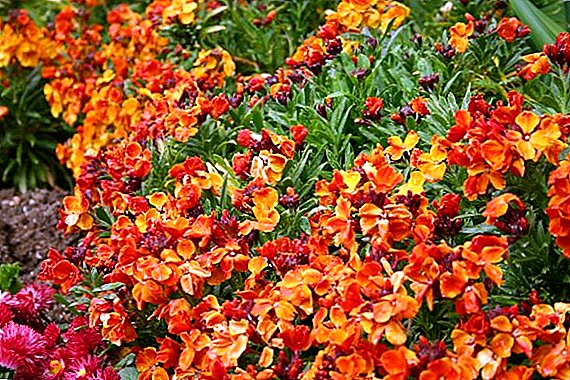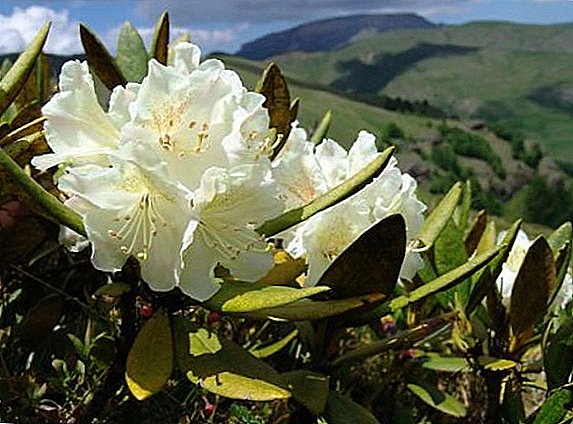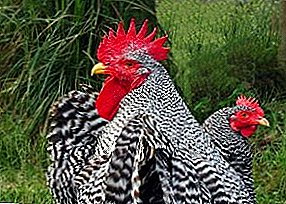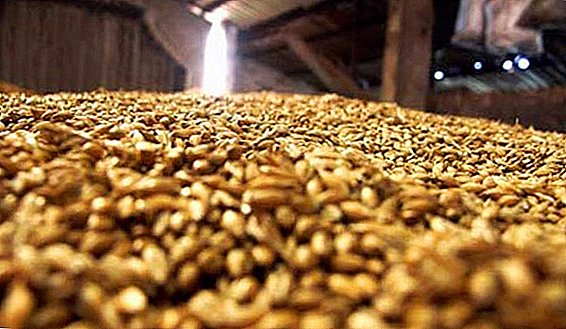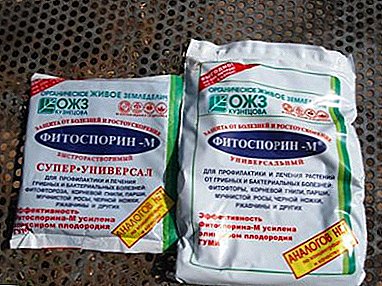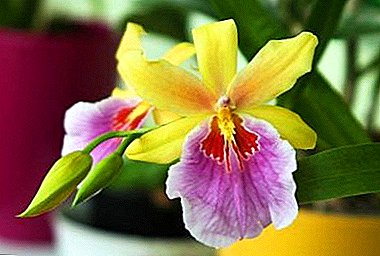
Increasingly, in the houses you can find Miltonia orchid. Such a plant made the brightness and frequency of flowering. This type of orchid can bloom several times a year. In this article we will learn about the most famous types of miltonia orchid, about the history of its occurrence, about the peculiarities of the flowering of the species, about caring for a flower at home, as well as about similar plants and the most common pests.
Brief Definition
Miltonia, like any other orchid, belongs to the orchid family. In nature, the flower can be found at an altitude of 200 to 1500 m above sea level, in shady forests in the central and southern regions of Brazil, in the east of Paraguay and in the north-east of Argentina.
Detailed description
The shape and color of these delicate flowers resembles butterflies. On the petals you can see the pattern in the form of flowing drops. The color palette is varied - from snow-white to saturated lilac in combination with a variety of colors. Miltonia orchid lifestyle is epiphytic. This affects the appearance. The plant has pointed lanceolate leaves and small succulent pseudobulbs at the base. Periodically false bulbs emit red, yellow, white, pink stems that resemble a panicle.
History of
The flower is named after the English scientist and orchid lover - Viscount Milton. The main types of miltonia discovered in the middle of the 19th century, although at first they were mistakenly attributed to the oncidium, odontoglossum, brassia, and other genera
Difference from other types
Oblong-pointed long and thin leaves are the main difference between miltonia and other plants of the orchid family. Its flowers always have a contrasting core and almost always rounded petals.
Subport with photo
There are about twenty subsorts of this orchid species.. Not counting the hybrid. Here are some of them:
Snow White (Miltonia Candida)

It blooms in autumn. From each bulb grows 1-2 peduncles Dinah up to 40 cm. They form a loose erect brush with 3-5 fragrant flowers up to 9 cm in diameter. On yellow wavy sepals and petals - large red - brown spots, and a white wavy rounded lip with a purple spot and three short tassels.
Ragnielli (Miltonia regnellii)

Renlli distinguish thin glossy leaves and stretching upward erect peduncles. They have from 3 to 7 fragrant flowers with white sepals and petals. On a light pink lip - purple stripes and white border.
Miltoniopsis Phalaenopsis (Miltoniopsis phalaenopsis)

It has short peduncles with 3-5 pure white flattened flowers. The small lateral lobes of the lips are white with light crimson spots and stripes, and a white groove is separated by a notch.
Miltoniopsis Retzla (Miltoniopsis roezlii)

From 2 to 5 fragrant white flowers form on each peduncle. At the base of the petals - lilac - lilac spots, and at the base of the lip - a yellow disc.
Vecillaria (Miltoniopsis vexillaria)

Vekyllies have large flowers, mostly pink with a white border., either with white and pink stripes or spots. At the base of the lips yellow spot. ,
Bloom
When and how?
This culture can bloom at any time of the year. And this flowering process lasts from 4 to 6 weeks. Miltonia is very fragrant. Peduncle comes from the base of the pseudobulb. Their number, shape and size depend on the particular variety. After flowering pseudobulb depleted and shriveled. It should be so.
Care before and after the appearance of buds
Delicate and sometimes capricious flower requires special care. It is very important to feed, water and provide miltonia time for rest. During active growth and flowering, in order to avoid direct sunlight, it is better to keep the flower pot on the eastern or western window-sills.
Never place the plant on windows facing north. With proper arrangement and care, the orchid is able to bloom for almost the entire year. To do this, every year provide the plant peace.
Even if the flower does not look tired, it is very important to introduce it correctly during the rest period. To do this, have an orchid in a room with a temperature of 16-18 degrees during the day and 14-16 degrees at night and normal humidity. Feeding is gradually stopped, and watering is reduced to once every four weeks. Resting plant lasts 2-3 months. The main sign that the flower is ready for new growth and flowering is the Forming flower arrow.
What if it does not bloom?
 Due to improper care, miltonia can not bloom, or only leaves can grow. The reason for this may be low light, low or high temperatures, improper nutrition, excessive watering or no rest period.
Due to improper care, miltonia can not bloom, or only leaves can grow. The reason for this may be low light, low or high temperatures, improper nutrition, excessive watering or no rest period.
For constant flowering, the plant must necessarily give rest.
Orchid will not bloom without feeding. It should be produced once a month in spring and summer. In the cold season it is necessary to reduce watering and reduce the temperature in the room. When the flower spike appears, watering and maintenance should be resumed.
We invite you to watch a video on how to make miltonia blossom:
Step-by-step home care instructions
- Choosing a place. Whether you placed the miltonia correctly will tell the color of its leaves. If the plant is good, then the leaves have a pinkish tint. The flower grows and blooms perfectly on the eastern and western windows and is very fond of partial shade. Therefore, on the southern window-sill of the orchid, additional shadowing is absolutely necessary.
- Soil preparation and pot. At home, the culture is most often grown in plastic pots - they retain moisture well. Drainage can be provided by laying a layer of large pieces of wood bark on the bottom. Flower pot is better to fill with a special soil or soil mixture. Soil made of fir bark, sphagnum or perlite is ideal for these orchids.
- Temperature. Miltonia like moderate temperatures. The optimum temperature for them is about 20 degrees Celsius. Less than 12 degrees flower transfers very bad. Sharp temperature drops also have a negative effect, and drafts are completely harmful to the plant.
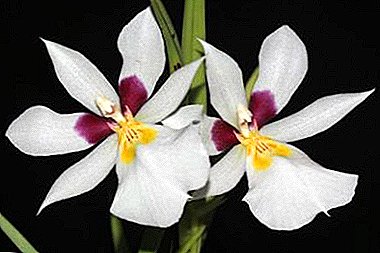 Humidity. The required air humidity is about 60-70%. To this end, miltonia is often placed on a pallet with water or wet pebbles.
Humidity. The required air humidity is about 60-70%. To this end, miltonia is often placed on a pallet with water or wet pebbles.- Lighting. The flower must be placed in a bright place, preferably on the west or east window. On the south side, the flower must be pritenyat.
- Watering. During the period of growth and flowering miltonia requires constant and abundant watering. It is important to prevent the soil from drying out. But excessive watering can lead to rotting of the roots or even death of the plant. Reference! In winter, in the dormant period, orchids barely grow or bloom. Therefore, minimum watering is necessary.
- Top dressing. Orchids are fed with special fertilizers. Begin feeding after a period of rest. During the budding period - once a week, and after the start of flowering the plant is fertilized less often.
- Transfer. The flower needs timely transplanting. But it is not necessary just to transfer a miltonia from one pot to another. An orchid is transplanted when it becomes crowded and its roots do not fit in the pot. Then a drainage layer is laid in the bottom of the larger pot and soil mixture is prepared.
In the old pot well moistened soil tapped and gently pull out the plant. Old soil is removed and the flower is placed in a new pot. They pour and compact the new substrate.
Attention! After transplantation, the first days only spray the orchid - do not water it. It is also not advisable to fertilize the plant during this period.
We offer you to watch the video about the care of Miltonia orchids:
How to multiply?
Miltonia is bred approximately once every three years at the end of the summer.. Method of reproduction - division of the bush, vegetative reproduction. A scion is separated from the adult stem and transplanted into a new soil. It should have at least three pseudobulbs and a mature measles system.
Diseases and pests
 The main enemies of miltonia are thrips, whitefly, and scale insects.
The main enemies of miltonia are thrips, whitefly, and scale insects.- Heat and lack of moisture provokes thrips multiplication. The leaves become silver color.
- Yellow and whitish spots at the bottom of the leaf are a sign of the appearance of the whitefly. The leaves become colorless, which can lead to the death of the plant.
- The result of the defeat of the flower by the shield is brown plaques on the stem and leaves.
Possible problems and solutions
Drying the tips of the leaves speak of soil salinity. Salt balance mono restore rainwater. Root roots with excessive watering. At the first signs of illness miltonia must be sprayed with phytosporin. It is advisable to transplant the flower in a new pot and replace the soil.
Important! It is the wrong care that leads to orchid diseases.
Similar plants
The structure of the flowers are similar to the rims of the garden viola (pansies), but the shape and color is much richer. Miltonia is often compared with violets, but orchid flowers are much larger - they can be up to 10 cm in diameter. Brazilian miltonia flowers are very similar to oncidium flowers.
To enjoy the beauty and tenderness of miltonia, it is important to choose a convenient place for the houseplant, protect it from direct sunlight and drafts, avoid sudden temperature drops and water it in time.


 Humidity. The required air humidity is about 60-70%. To this end, miltonia is often placed on a pallet with water or wet pebbles.
Humidity. The required air humidity is about 60-70%. To this end, miltonia is often placed on a pallet with water or wet pebbles. The main enemies of miltonia are thrips, whitefly, and scale insects.
The main enemies of miltonia are thrips, whitefly, and scale insects.